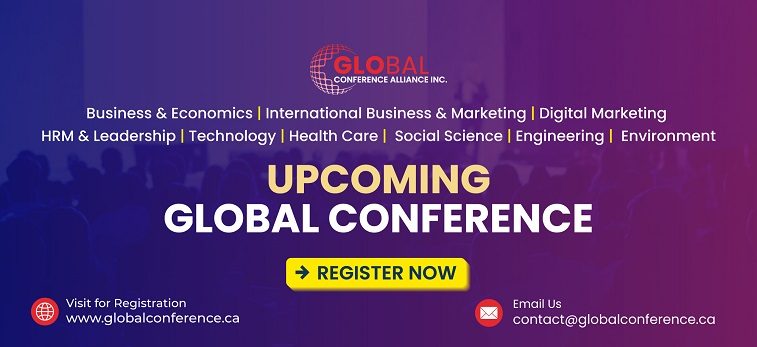Researchers from around the world gather at computer science conferences in the USA to share new ideas and discoveries. You might be wondering, how can I submit a paper to a computer science conference in the USA? It’s normal to have this question if you want your work to reach other experts and make an impact in the field. Knowing the right steps is important to getting your research noticed and accepted.
Submit a paper to a computer science conference in the USA by choosing the right conference, reading the guidelines, writing clearly, using the required format, and uploading through the official portal. Follow deadlines, keep your paper polished, and prepare for review and feedback after submission.
Are you curious about what else you need to do to prepare your paper for a U.S. computer science conference? If yes, keep reading this article to learn all the details that will help you through the process from start to finish.
How Can I Submit a Paper to a Computer Science Conference in the USA?
Getting your research published in a computer science conference sounds big, but the process becomes clear once you break it down. Whether it’s your first time or not, knowing the right steps matters. Let’s understand how to do it right.

Choose the Right Conference
Before anything else, you need to find a conference that matches your research topic. Some focus on machine learning, while others might be all about cybersecurity or data science. Each has its own theme and expectations. While exploring conferences in USA, make sure the one you pick is well-known and respected. Good conferences usually share a “Call for Papers” that explains everything about the event and how you can take part.
Read the Guidelines Carefully
Every computer science conference sets its own rules for submission. You’ll find all the details in their official call for papers. This includes what kind of papers they accept, how long they should be, and what format to follow. Deadlines are also very important. Missing one might mean your paper won’t even be looked at. So, mark all dates and stick to them tightly.
Write a Strong Paper
A good paper starts with a clear problem and shows how your idea or method solves it. You need to explain your process, show your results, and make sure everything makes sense. Keep your writing easy to follow but also detailed. Focus on what’s new or useful about your work. Also, don’t forget to back it up with tests, data, or results to prove it works.
Follow the Format
Most conferences tell you to use a certain template, like one from IEEE or ACM. You must follow it without changing anything, not even the font size or margins. These templates help keep all papers uniform. If your paper doesn’t match, it might be rejected before anyone reads it. Add clear charts, graphs, or tables if they help explain your work better, but keep them neat and labeled.
Check the Review Style
Some conferences use a double-blind review. This means the people reviewing your paper won’t know who wrote it, and you won’t know who reviewed it. In such cases, don’t mention your name or any info that gives you away inside the paper. Keep things neutral and stick to facts. If it’s a single-blind review, reviewers may see your name, but you still won’t see theirs.
Get the Paper Ready
Once your paper is complete and follows the format, it’s time to get it ready for submission. Make sure your title is short and clear. Write a short summary, or abstract, that tells what your paper is about. Don’t forget to add keywords so people can find your paper easily. Check that all parts, like introduction, results, and conclusion, are included and polished.
Submit and Wait
The final step is to submit your paper through the official conference portal. After submitting, all you can do is wait for the results. If your paper gets accepted, they’ll ask for a final version, called a camera-ready version, with some changes if needed. If your paper doesn’t make it, read the feedback and try again next time with improvements.
Here’s a sample form for submitting paper for USA computer science conference:
Submitting a paper to a computer science conference takes planning, focus, and attention to detail. Once you know the steps, the process becomes much easier to handle. Just take it one part at a time and don’t rush. Keep learning from each try, and your chances will keep getting better.
Basic Requirements for Submitting a Paper to a U.S. Computer Science Conference
Submitting a research paper to a computer science conference in the U.S. might seem a little tricky at first. Each conference has its own set of rules you need to follow. Knowing the basics early on can save you from small mistakes later. Stick with this guide to make sure your paper meets all the right steps and gets noticed.
- You can submit either a full paper or just an abstract, depending on what you have ready and what the conference allows.
- Make sure your paper is completely original and hasn’t been published anywhere else or sent to another conference or journal.
- All submitted papers are reviewed using a double-blind process, so don’t include your name or any personal details in the document.
- Use APA style throughout your paper, which includes how you write, format references, and organize the paper sections.
- Your full paper should be at least 4 pages long but no more than 10 pages, including everything like graphs and references.
- The font for your paper must be Times New Roman, and you have to use size 10 for the text in the entire document.
- You’ll need to upload your finished paper through the official submission form found on the conference website.
- If your paper gets accepted, make sure to register as an author using the author registration form on the same website.
- If you just want to listen and attend without presenting a paper, there’s a separate listener registration you’ll need to fill out.
- After you submit your paper, it might take up to 14 business days for the reviewers to finish checking and give feedback.
In many U.S. computer science conferences, submission types may include full papers, short papers, and even poster sessions at computer science conferences, which are a great opportunity for researchers to showcase work in a more informal, visual format.
How to Find the Right Computer Science Conference in the USA for Your Paper?
Finding a good computer science conference doesn’t have to be hard. There are many choices, but not all will fit your paper. Some are very focused, while others cover many topics at once. In the next steps, you’ll learn how to find the right one.
Pick the Right Topic
Start by understanding what your paper talks about the most. It could be about machine learning, data science, or website design. Every conference looks for papers on certain topics only. So, sending your paper to the right one helps a lot. When your topic fits well, the chance of acceptance goes up. It also makes sure people listening will enjoy your work. That makes the whole experience better and more fun as well.
Think About the Audience
Not everyone at a conference will understand your topic deeply. That’s why you should think about who will be there first. If your paper is technical, the crowd should also enjoy technical things. Some conferences bring experts, others bring fresh learners or teachers. Knowing this helps you choose better and talk to the right people. A good audience will understand, ask smart questions, and share new ideas. That makes your time more helpful and interesting.
Match the Scope
The size and focus of a conference matter more than you think. Smaller ones may focus only on security or robotics, for example. Bigger ones talk about many computer topics in one event. If your paper covers only one area, go for a focused event. If your work touches many fields, pick a broader one instead. Looking at past events helps you see what they usually accept. That way, you won’t waste time sending it to the wrong place.
Watch the Deadlines
Deadlines are important and can’t be ignored, even by one day. Every computer science conference has a final date to send your paper. Some dates are early in the year, others come later on. If you miss it, you’ll need to wait another full year. You can make a list or set reminders on your phone. Being ready early gives you time to fix small mistakes. This also lowers your stress and keeps things simple.
Use Helpful Websites
Some websites help you search for good conferences fast. You can type in your topic, place, or time to filter the results. Some good ones are WikiCFP and Papers With Code—both are easy to use. Always check the conference’s official site for final details and updates. You’ll find the rules for submitting papers and the event’s location too. Some are online, while others are in big U.S. cities. That’s useful to know before planning anything.
That’s how you can choose a computer science conference the easy way. Picking the right one helps your paper get better attention. Each step makes things simpler and less confusing for everyone. Follow these tips, and you’ll feel more confident while choosing.
How to Format Your Paper for Submission to a U.S. Computer Science Conference?
Computer science conferences require a certain format for papers. Most conferences follow rules from the ACM or IEEE formats. You must use the correct templates and write clearly and carefully. Bad formatting can make your paper get rejected even if it’s good. Here’s a quick guide to get your paper format right.
1. Read the Official Call for Papers (CFP)
- Always start with the CFP or author guidelines provided on the conference website.
- These documents specify the exact formatting rules, template requirements, page limits, and submission procedures.
2. Choose the Correct Template
Depending on the conference’s affiliation:
ACM Conferences
- Use the ACM Master Article Template:
- Available in LaTeX and Word.
- Use the acmart document class in LaTeX with the appropriate conference options (e.g., sigconf, sigplan, etc.).
IEEE Conferences
- Use the IEEE conference template:
- Available in LaTeX and Word.
Independent Conferences
- Some conferences have custom templates or simpler requirements—check their website.
3. General Formatting Elements
While the templates handle most of this, these are common formatting requirements:
| Element | Typical Requirement |
| Paper Size | US Letter (8.5 x 11 inches) |
| Font | Times New Roman or Computer Modern |
| Font Size | 10pt for main text |
| Margins | 1 inch (usually handled by the template) |
| Columns | Two-column layout |
| Spacing | Single-spaced |
| Page Limit | Varies; typically 6–10 pages excluding references |
| File Format | PDF (with embedded fonts) |
4. Structure of the Paper
Most computer science conference papers follow this structure:
- Title and Author Information
- Abstract – concise summary (150–250 words)
- Keywords – 4–6 relevant keywords
- Introduction
- Related Work
- Methodology or System Design
- Experiments / Evaluation
- Results
- Conclusion and Future Work
- References
Appendices and acknowledgments may be allowed depending on the page limit.
5. Anonymization for Double-Blind Review
If the conference uses double-blind reviewing, make sure to:
- Remove all author names and affiliations.
- Avoid self-referencing work that reveals your identity (e.g., “As we showed in [1]…”).
- Remove metadata from the PDF.
6. Citation Style
Different conferences ask for different ways to cite other research. IEEE uses numbers like [1], while ACM uses names and years. You should always use citation tools like BibTeX for better results. These tools help you format everything correctly and quickly. Wrong citations can hurt your score during the review. Double-check every reference you include in the list. Reviewers care a lot about proper credit. Mistakes in citations can cause serious issues.
7. Accessibility and PDF Compliance
- Ensure your PDF is accessible (e.g., tagged PDFs).
- All fonts must be embedded.
- Avoid scanned images for text.
Formatting rules are different for each computer science conference in the U.S. You must always follow the exact guidelines given by the organizers. Read all the instructions and check them more than once. Using the correct template and format can improve your chances of success.
Tips to Improve Your Chances of Acceptance at a U.S. Computer Science Conference
If you want your paper to be accepted by a good computer science conference, you need to do more than just write it. How you share your ideas and show your work also matters a lot. Keep reading for simple ways to make your paper better.
Clear Abstract
The abstract is the first thing people read, so it needs to make sense quickly. Try to explain what your paper is about in simple and short words. Don’t add too many ideas at once—just the main ones. You can write what problem you solved, how you solved it, and what you found. Avoid using words that sound too fancy. Keep the tone friendly and easy to understand from the start.
Strong Keywords
Keywords help others find your paper when they search for similar work. Pick words that match the most important parts of your research. Think about what someone would type into a search box to find your paper. Don’t choose very common or too general words. You can use a mix of technical and simple words. Also, try not to repeat the same keyword too many times in one paper.
Show Your Results
Your paper will be stronger if you clearly show what you found. Use simple charts, graphs, or tables to make the results easy to see. Don’t just say “it worked”—show how well it worked. Write about what went right and also what did not go as planned. Reviewers want to see real proof and honest writing. If you tested something, explain how and what happened clearly.
Avoiding Mistakes
There are a few small mistakes that can hurt your paper a lot. One is writing in a way that’s too hard to follow. Another is not checking for spelling or grammar problems. Also, don’t copy from other people’s work—always give credit. Make sure your formatting follows the rules they gave. Lastly, never wait till the last day to submit your paper. That usually leads to small but harmful errors.
Keep It Simple
Some people try to use big words to sound smart, but that doesn’t help. It’s better to say things clearly so that anyone can understand. Use short sentences that say just one thing at a time. If your paper is easy to read, people will enjoy reading it. Even a hard topic can be explained in simple words. Being simple doesn’t mean you’re not smart—it means you’re a good writer.
Before submitting, it can be helpful to attend a computer science conference without presenting a paper, so you can observe the types of topics, presentation styles, and expectations that are common in your target conferences.
FAQs About How Can I Submit a Paper to a Computer Science Conference in the USA?
Submitting a paper to a computer science conference in the USA can bring up a lot of questions. It’s normal to wonder about different parts of the process. Here are some common questions and simple answers to help clear things up. These FAQs will guide you through things you might not have thought about yet.
What Is a Camera-Ready Paper?
A camera-ready paper is the final version of your work that you submit after it’s accepted. You should make any changes requested by the reviewers before sending it in. This version should be perfect in format, spelling, and content. It’s the one that will be printed or shared at the conference.
Can I Submit to Multiple Conferences at the Same Time?
It’s usually not allowed to send the same paper to several conferences at once. This is called simultaneous submission and is considered unfair. You should wait for a decision from one conference before trying another. If your paper is rejected, then you can submit it elsewhere.
How Do I Prepare for My Presentation?
After your paper is accepted, you may need to present it at the conference. Prepare by practicing what you will say clearly and slowly. Use simple slides with key points, not too much text. Practicing in front of friends or family can help you feel more confident.
What Is a Poster Session?
A poster session is a chance to show your research on a large poster instead of a full talk. It’s more informal and lets you explain your work one-on-one. Many conferences offer this for shorter or early-stage projects. It’s a great way to meet other researchers and get feedback.
How Important Is the Abstract?
The abstract is very important because it’s the first thing reviewers read about your paper. It should clearly explain what your research is about in a few simple sentences. A good abstract helps reviewers understand your work quickly. Make sure it is clear and interesting without being too long.
Can I Use Images or Figures in My Paper?
Yes, you can use images, charts, or graphs to help explain your ideas better. Make sure they are clear, simple, and easy to understand. Always label them properly with titles or numbers. Don’t overcrowd your paper with too many pictures.
What Happens If My Paper Is Rejected?
If your paper is rejected, don’t get discouraged. Reviewers usually give feedback on what could be better. Use that feedback to improve your work for next time. Many successful papers were rejected at first, but got better with changes.
Is There a Fee to Submit My Paper?
Some conferences charge a fee to submit or register as an author. This fee helps cover the costs of organizing the event. Check the conference website for information about any fees. Sometimes, there are discounts or waivers for students or early submissions.
How Do I Handle References in My Paper?
References are a list of other works you used to support your paper. You need to follow the citation style given by the conference, like APA or IEEE. Make sure every reference is complete and correctly formatted. Giving proper credit avoids plagiarism and shows your research is solid.
Can I Make Changes After Submitting My Paper?
Usually, you cannot make big changes after submitting your paper. The reviewers will look at what you sent, so it needs to be ready. If you notice a small mistake, some conferences might allow corrections before the review ends. Always double-check your paper before hitting submit to avoid problems.
Bottom Line
Now you know the simple steps and key details needed to submit your research. From choosing the right conference to formatting your paper properly, you have a clear path. So, if you were wondering how can I submit a paper to a computer science conference in the USA, this guide has given you the answer in an easy way.
Remember to follow each step carefully, meet all deadlines, and keep your writing clear and honest. Avoid rushing at the last moment and always check your work. With patience and focus, you can succeed. Best wishes on your research and conference journey!







